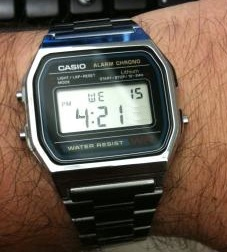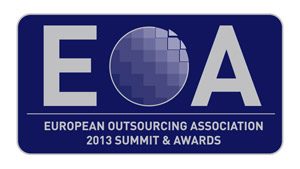
I’ve just finished reading through the Gartner ‘Top 10 Strategic Technology Trends 2016’(1) which I would have to summarise as ‘RUN FOR THE HILLS – THE MACHINES ARE COMING !’. Much of it being about how the IoT (Internet of Things) will form a ‘mesh’ of data-enabled self-learning devices, become autonomous and takeover our lives.
On a more positive note the IoT was heralded at the World Economic Forum (WEF) in Davos as driving the “Fourth Industrial Revolution”. Whichever one it is, I believe you should not see the Internet of Things (IoT) about ‘things’ but about us as consumers.
I came across both points of view while researching how the IoT will impact individuals and change Marketing and Customer Service. As individuals we have an increasing number of digital assets. These are the digital ‘Activities’ and ‘Actions’ we perform, that are already being used by savvy marketers.
The difference ? Activities I define as ‘continuous’ e.g. periods of time we spend in the digital universe – video clips we watch on the train, blogs we read at work, Snapchats we get, etc. Actions are ‘discrete’ e.g. the clicking on a ‘like’ button, the action of forwarding a link, dismissing an advert etc.
I think there is a third asset class I call ‘Associations’ – this is the data associated with these actions and activities. These would be items such as: Location – where was it performed: Time – at what time of day it happened: Sentiment – what did the ‘like’ indicate: Device – a mobile which indicates personal activity or an intelligent TV which might be group activity.
All together these could be called ‘Big Data’ but I believe the IoT will expose these Associations more easily, but companies that use this ‘Triple A’ data (Activities, Actions and Associations) need to be able to quickly exploit it and tune their activities. At the moment IoT devices are standalone, we’re told seamless connected consumer experience is years away.
However, looking at the investments being made by some of the key vendors at the moment that might be just a bit closer. Amazon, Google, Apple, MS et. al. are all fighting it out for the initial standard to glue every ‘thing’ together.
But what will the IoT mean for Customers ?
IoT moves us towards the marketing nirvana of the ‘Segment of One’ as it can add device and sensory generated data into Customer Service platforms holding buying behaviour and a social media persona. This allows an intimate level of customer engagement.
But does this means irresistible marketing ? Well, using a combination of context, data and analytics the success rate for an item offered typically comes in at a 40% – whereas mass marketing over traditional channels usually has a success rate of less than 5% (2).
However automation is needed to ensure you keep the cost of segmentation is low. Tools will be needed that capture, present and quickly analyse complex behaviour to offer consumers the ‘next best’ offer. I’m not sure people are quick enough to meet the demands of the IoT.
That’s where the automation of the virtual agent would work better – and in some cases is. For example between EBAY and Vodafone (through their SFR division) they already serve 1.5m customer ‘conversations’ using virtual agents (3).
So we might quickly have a scenario where your connected fridge is communicating with the virtual Customer service agent to decide what evening meal you would like. Both will have checked with the connected Microwave it can cook it and checked the automated bin that tells them both what parts of the last meal you threw away. Finally if you have one to many glasses of wine your health monitor wristband will alert your insurance company.
So perhaps Gartner are not totally wrong. Looking around though I don’t think the machines are coming – I suspect they are already here.
1 http://www.slideshare.net/denisreimer/gartner-top-10-strategic-technology-trends-2016








